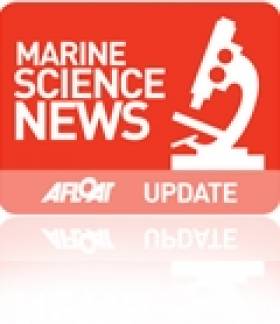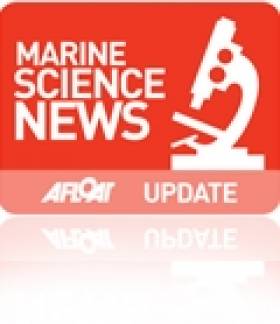Displaying items by tag: Sea2Sky
Galway's Sea2Sky Celebrates European Researcher’s Night in Ireland
#MARINE SCIENCE - Galway will celebrate European Researchers’ Night on Friday 28 September together with 320 cities around Europe with its latest Sea2Sky event.
Sea2Sky, organised by NUI Galway in collaboration with the Marine Institute, Galway Atlantaquaria and its new partner CIT Blackrock Castle Observatory in Cork, will showcase science on the grandest of scales themed around marine science, atmospherics and astronomy.
The main events will be held at the Galway Bay Hotel, Leisureland and Galway Atlantaquaria, with events also taking place in CIT Blackrock Castle Observatory in Cork.
“Irish researchers are involved in some huge European research projects, and this is an opportunity to share some of the most exciting elements with the public," said event organiser and NUI Galway physics lecturer Dr Andy Shearer.
"At third level, we have seen a surge in applications for science related courses and this event will be a real draw for anyone tempted by a career in science and research.”
Last year some 10,000 people came to the event, and the plan is for an even bigger event this year, with highlights including the CERN exhibit, 3D tours of the universe and tours of the aquarium. This year visitors can participate in experiments, competitions and quizzes, watch demonstrations and simulations, exchange ideas and get to know the researchers on the free family day.
Among the showcase exhibits at the Marine Institute will be the ROV Holland 1 and a weather buoy. Scientists and technicians will be on hand to explain the work of their equipment and recent expeditions.
Inside, Marine Institute scientists will exhibit work relating to the marine environment (such as algal blooms), weather monitoring and oceanography, advanced mapping techniqyes, research vessel operations conducted by the R/V Celtic Voyager and R/V Celtic Explorer, and the Explorers Education Programme, which highlights the seashore as a vital teaching resource.
There will also be screenings throughout the day of a short film showing the newly discovered and previously uncharted field of hydrothermal vents along the Mid-Atlantic Ridge captured by Holland 1 last year.
Footage of the cold water corals and life under the sea at depths of 3,000 metres taken during the Biodiscovery and Ecosystem Survey of the Whittard Canyons will also be shown.
This year, Sea2Sky is linking up with the Galway Science Forum’s exhibition about the work of CERN – Accelerating Science. This exhibition, sponsored by Boston Scientific in partnership with NUI Galway, will show how CERN’s Large Hadron Collider can help us understand fundamental questions about the origins of the universe.
For further details of the event, visit www.sea2sky.ie.
Scientists Set to Show Off in Salthill
Hundreds of experts will be showcasing their work in marine science, weather and astronomy in Galway next Friday 23 September, the Galway Advertiser reports.
The special family-oriented Sea2Sky event - organised by NUI Galway in tandem with the Marine Institute and Galway Atlantaquaria - aims to educate the public about the wonders around us, from Ireland's marine wildlife and habitats to the stars and solar system.
The two main venues at Galway Atlantaquaria and Leisureland in Salthill will host various scientific demonstrations on the day, while the promenade between the two will be lined with amateur astronomers and their telescopes.
One of the highlights is sure to be the chance to see the remote submarine used by scientists to explore hydrothermal vents in the north Atlantic this summer.
The full programme of events is abailable at www.sea2sky.ie.

























































